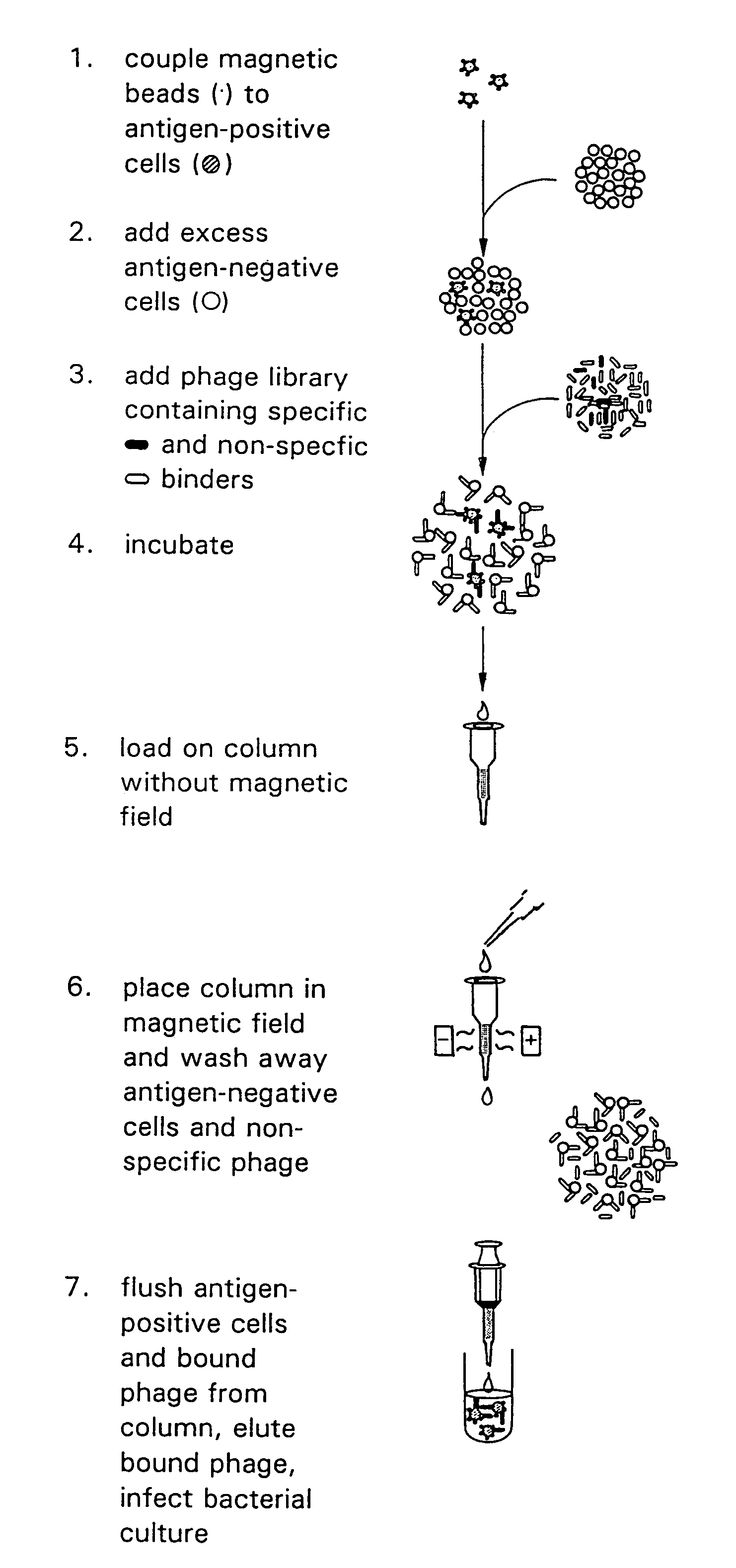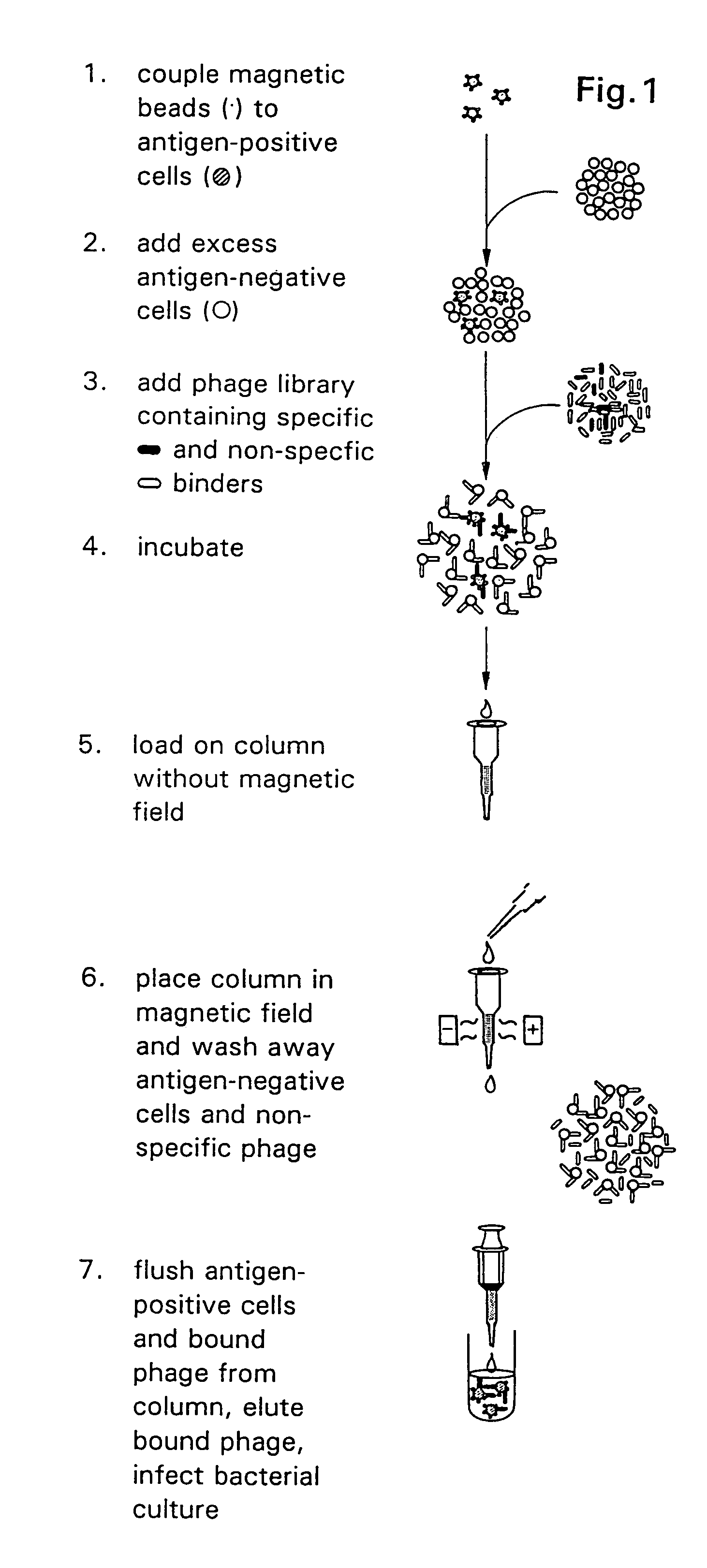Compositions and methods for detection of antibody binding to cells
a technology of antibody binding and cell, applied in the field of cell adhesion, can solve the problems of human antibody in vitro, cell fusion, and inability to detect antibodies which are expressed on the surface of virus particles, etc., and achieve the effect of avoiding cell adhesion and adhesion
- Summary
- Abstract
- Description
- Claims
- Application Information
AI Technical Summary
Problems solved by technology
Method used
Image
Examples
Embodiment Construction
[0040]According to the present invention, there are provided rapid methods of typing cells with respect to the antigens expressed thereon, which methods are based upon the use of antibodies which are expressed on the surface of a virus. The typing of cells using phage-expressing antibodies is based on the use of an anti-phage antibody in an agglutination reaction.
[0041]Typically, the cells to be typed are red blood cells although as discussed herein, the invention is not limited solely to typing of red blood cells.
[0042]There are significant advantages to typing cells using a phage system, particularly in the case of typing red blood cells. For example, approximately 10% of blood donors and recipients have red blood cells which are coated with some of their own IgG antibodies. While the mechanism by which this occurs is immaterial, the presence of these antibodies on the red blood cells renders the cells untypeable by conventional methods which use IgG anti-Rh typing serum. For exam...
PUM
| Property | Measurement | Unit |
|---|---|---|
| length | aaaaa | aaaaa |
| mole fraction | aaaaa | aaaaa |
| particle size | aaaaa | aaaaa |
Abstract
Description
Claims
Application Information
 Login to View More
Login to View More - R&D
- Intellectual Property
- Life Sciences
- Materials
- Tech Scout
- Unparalleled Data Quality
- Higher Quality Content
- 60% Fewer Hallucinations
Browse by: Latest US Patents, China's latest patents, Technical Efficacy Thesaurus, Application Domain, Technology Topic, Popular Technical Reports.
© 2025 PatSnap. All rights reserved.Legal|Privacy policy|Modern Slavery Act Transparency Statement|Sitemap|About US| Contact US: help@patsnap.com



